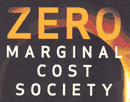>Top 3. The courtship of Capitalism and Vertical Integration:
- While capitalism operates through free market, free markets don't require capitalism.
- Birth of capitalism:
- until late 18C: capitalism didn't emerge with the introduction of steam power.
- Coal-powered Steam Infrastructure:
- In 1769, James Watt invented steam engine and first deployed to the cotton industry.
- The productivity jumped from 22M to 366M pounds, and the cost of production plunged.
- Hydraulic energy continued to be used in France than coal-fired steam engine.
- Steam power rose from 4M HS in 1850 to 18.5M HS in 1870.
- England was the first country to make the shift from water and wind to coal, followed by Germany. US quickly caught up. These three counties dominated the First Industrial Revolution.
- By 1830sl, locomotives were travelling at 60 miles per hour.
- from NY to Chicago by stagecoach took 3 weeks or more in 1847, but by 1857 the same trip by rail took 3 days.
- By 1870, 70,000 miles of track were laid down, connecting much of the continental US.
- By 1900, over 200,000 miles of track connected across the breadth of America.
- Unique Capitalism:
- Financing for transport infrastructure on this scale required the modern stock-holding corporation.
- Much of the stock in US railroads were purchased by UK, French and German investors.
- the workforce is stripped of its ownership of the tools to create the products, and the investors are stripped of their power to control and manage their businesses.
- The major railroads brought mining properties to secure coal for their locomotives.
- managing the acceleration and expansion of commerce and trade across national markets would have been impossible without an accompanying communications revolution.
- The new print communications revolution:
- In 1890, Printing integrated complex near Chicago rail yards, ensuring quick delivery of prints.
- Millions of Americans purchases virtually all business and home goods by catalogs printed in Chicago printing houses by coal-powered steam printing, communicated by telegraph, and delivered by stream rail transport.
- The Second Industrial Revolution:
- Discovery of oil, invention of internal combustion engine, and telephone gave rise to a new CET complex.
- Worldwide exploration and production of oil and gas were nearly $2.4T between 2000-2011.
- Refining process is also difficult.
- Marketing of oil is no less complicated.
- In US, 5 companies control 34% of domestic oil exploration and production; Chevron, BP, Royal Dutch Shell, ExxonMobil, and Conoco Phillips.
- In 1876, Bell invented the telephone; in 1885 created AT&T.
- Electricity:
- In 1900, only 5% of factories used electricity; 300% increase in productivity from steam power to electrification.
- By 1910, 10% homes in us had electricity, and by 1929 most urban homes wee connected to electricity.
- Automobiles:
- By 1916, 3.4M autos were on US roads; by 1930 23M cars in US.
- Automobiles consumed 20% of steel, 12% of aluminum, 10% of copper, 51% of lead, 95% of nickel, 35% of zinc, and 60% of rubber used in US.
- Oil:
- By 1930, oil had suppressed coal as the primary energy source in US.
- Interstate Highway:
- from 1950s to 1980s; most costly public works project.
- factories began to relocate away from urban centers; deliveries from rail to trucking.
- dramatic growth of the suburbs.
- The Second Industrial Revolution:
- peaked and crashed in 2008/7 ,when the crude oil peaked $147/bbl.
- today, in the sunset of the fossil fuel era, the oil industry remains the most concentrated industry in the world; followed closely by telecom and electrical power generation & distribution industry.
- 3 of 4 largest companies in the world are oil companies; Royal Dutch Shell, ExxonMobil, and BP.
- underneath 10 banks - JPMorgan Chase, Goldman Sachs, BOA Merrill Lynch, Morgan Stanley, Citigroup, Deutsche Bank, Credit Suisse, Barclays Capital, UBS, and Wells Fargo Securities - controlled 60% of world investment market.
- beneath the financial investors are 500 global traders, with combined revenue of 22.5T(=1/3ofworld62T GDP)
|
3.
資本主義と垂直統合への熱情
- plunge: rapid decrease
- meticulous: showing great attention to detail
|
| |
Owner |
Manage |
Worker |
Tool |
| Home manufacture |
landlord |
peasant |
water/
wind |
budding
capitalism |
capitalist |
ex-craftman |
water/
wind |
Modern
corporation |
investor |
CEO |
labor |
steam/
elect. |
| IoT-AI |
cloud f. |
Exp.+AI |
robot |
AI |
|
